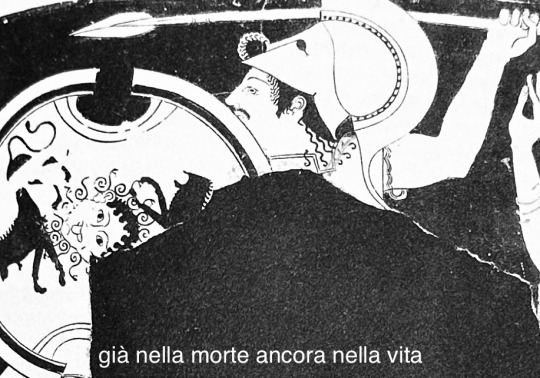#fayum
Text

~ Portrait of two brothers.
Period: Roman Period
Place of origin: Hawara, Fayum
Medium: Cedar wood with encaustic painting
#ancient#ancient art#history#museum#archeology#ancient egypt#roman#ancient history#archaeology#Fayum#Egyptian#egyptology#Egypt#portrait#portrait of two brothers#hawara
5K notes
·
View notes
Text
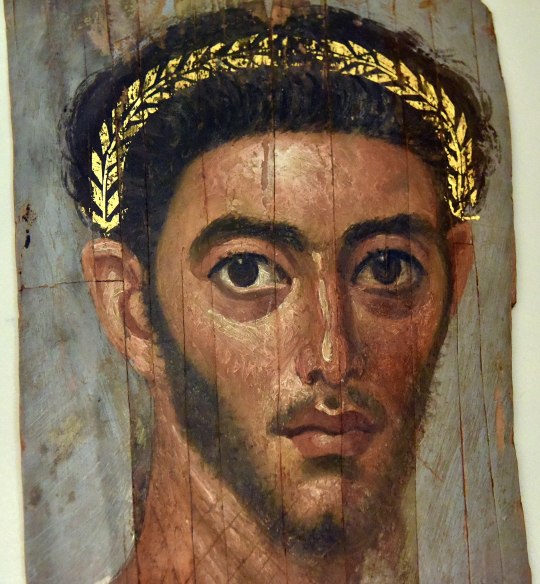
Egyptian mummy portrait (encaustic on wood) of a Roman soldier wearing a gold wreath. Artist unknown; ca. 130 CE (reign of the emperor Hadrian). Found at er-Rubayat in the Fayum; acquired in 1927 and now in the collection of the Altes Museum, Berlin. Photo credit: Osama Shukir Muhammed Amin FRCP/Wikimedia Commons.
#classics#tagamemnon#Ancient Rome#Roman Empire#Egypt#Ancient Egypt#Roman Egypt#Greco-Roman Egypt#portrait#portrait painting#mummy portrait#art#ancient art#Roman art#Ancient Roman art#Roman Imperial art#Egyptian art#Ancient Egyptian art#Romano-Egyptian art#Fayum#Altes Museum#encaustic#encaustic on wood
315 notes
·
View notes
Text
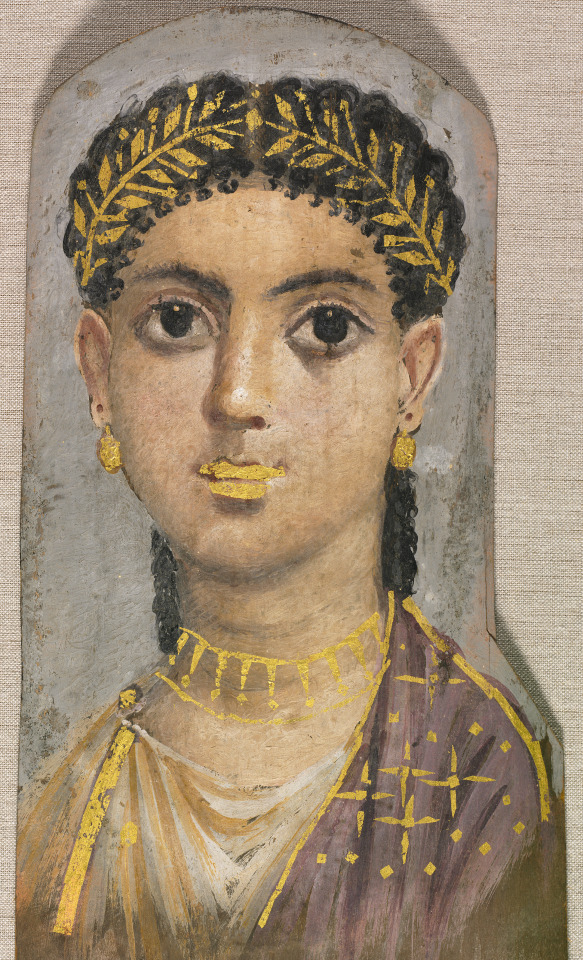
Mummy Portrait of a Young Roman Girl, ca.AD 25-37
Roman Egypt, late Tiberian
The Cleveland Museum of Art
#roman empire#egypt#roman egypt#fayum#fayum portrait#art#female portrait#female#portrait#funerary portrait#fine art#classical art#brunette#woman#black hair#black eyes#gold leaf#laurel crown#rome#tiberius
93 notes
·
View notes
Photo

Hello! If you are interested in Egyptology and the Fayum “mummy portraits,” do I have the virtual event for you! This event is on Zoom and completely free.
Face to Face: Conservation Research on 'Mummy Portraits' in the Detroit Area
February 28th at 6:30 PM
Virtual event on Zoom
Join us for an evening of conversation with conservators Caroline Roberts and Ellen Hanspach-Bernal who will be sharing their research on Egyptian "mummy" panel portraits at the Kelsey Museum of Archaeology and the Detroit Institute of Arts.
Register via link http://bit.ly/3JSJb7F
Speaker Profiles:
Caroline Roberts
Talk title: Reengaging with Roman Egyptian portraits and panel paintings through technical research at the Kelsey Museum
Bio: Caroline Roberts is an archaeological conservator and a graduate of the Winterthur / University of Delaware Program in Art Conservation. Carrie’s professional background includes post-graduate fellowships at the Kelsey Museum of Archaeology at the University of Michigan, the J. Paul Getty Museum, and the Metropolitan Museum of Art. Her research interests include the conservation of stone artifacts and architecture in museum and field settings, the characterization of ancient polychromy, and preventive conservation. Carrie’s conservation fieldwork experience includes seasons at Kaman-Kalehöyük in Turkey, Selinunte in Sicily, El-Kurru in Sudan, and Abydos in Egypt. She is a Professional Associate of the American Institute for Conservation.
Ellen Hanspach-Bernal
Talk title: Deconstructing an Ancient Egyptian Mummy Portrait at the Detroit Institute of Arts
Bio: Ellen Hanspach-Bernal is a 2006 graduate of the art conservation program at the Hochschule für Bildende Künste, Dresden. From 2006 to 2009 she was the Andrew W. Mellon Fellow in painting conservation at the Menil Collection in Houston, Texas. She has worked for Klassik Stiftung Weimar and for the Conservation Centre for the Museums of the City of Erfurt, Thüringen, in Germany. In 2015 she returned to the United States to work as Conservator of Paintings at the Detroit Institute of Arts.
Image credit: 25.2, Egyptian, Head of a Woman at the Detroit Institute of Arts
#fayum mummy portraits#fayum#Egypt#egyptology#Ancient Egypt#faiyum#Egyptian Archaeology#archaeology#faiyum mummy portraits
93 notes
·
View notes
Photo

Uknown
_
Fayum mummy-portrait of a lady, 54-68 AD, found in Hawara, Egypt, a site near the Fayum oasis. On display in 2009 exhibition "Roman Imperial Painting", Rome. (AP Photo/Pier Paolo Cito)
The Fayum portraits date to the Imperial Roman era, from the late 1st c. BC or the early 1st c. AD onwards. Recent research suggests their production ended in the middle of the 3rd c. AD. They are survivors of the panel painting tradition of the classical / Greco-Roman world, continued into Byzantine, Eastern Mediterannean, and Western traditions in the post-classical world, including the local tradition of Coptic iconography.
http://elogedelart.canalblog.com/archives/2009/09/26/15207626.html
https://historicaleve.com/ancient-faces-fayum-mummy-portraits/
https://realhistoryww.com/world_history/ancient/mummy_portraits_2.htm
https://en.wikipedia.org/wiki/Fayum_mummy_portraits
48 notes
·
View notes
Text

Fayum portrait of a woman in a blue mantle. This artifact was seized from the Met Museum for being an artifact illegally obtained.
111 notes
·
View notes
Text
For the first time in over a century, sarcophagi with mummy portraits have been found in Fayum, Egypt. The new collection was discovered inside an incredible funerary building hidden beneath the sands.
43 notes
·
View notes
Text
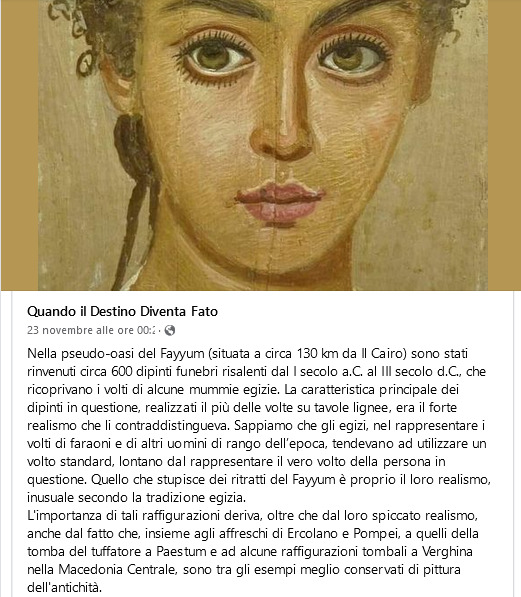

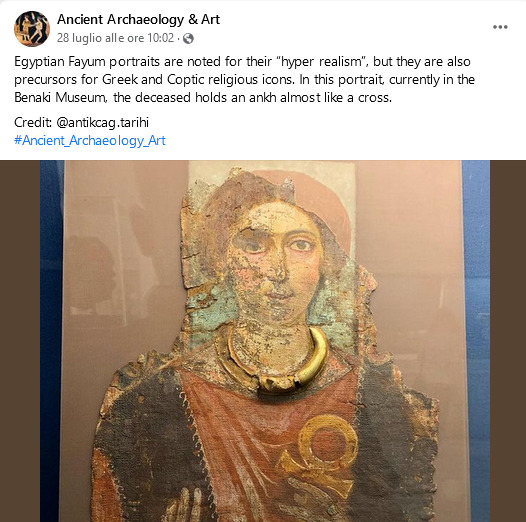

Portraits from Fayum. Studied by Paula Modersohn-Becker.
#fayum#Claudia Ciardi#Paula Modersohn-Becker#portraits#the sacred feminine#writing#painting#art and books#margininversi#art#Kunst#Zeit#greek art#ancient egypt#padlet#pearltrees
10 notes
·
View notes
Text
Por primera vez en más de un siglo, se han encontrado sarcófagos con retratos de momias en Fayum, Egipto. La nueva colección fue descubierta dentro de un increíble edificio funerario escondido bajo la arena.
2 notes
·
View notes
Text
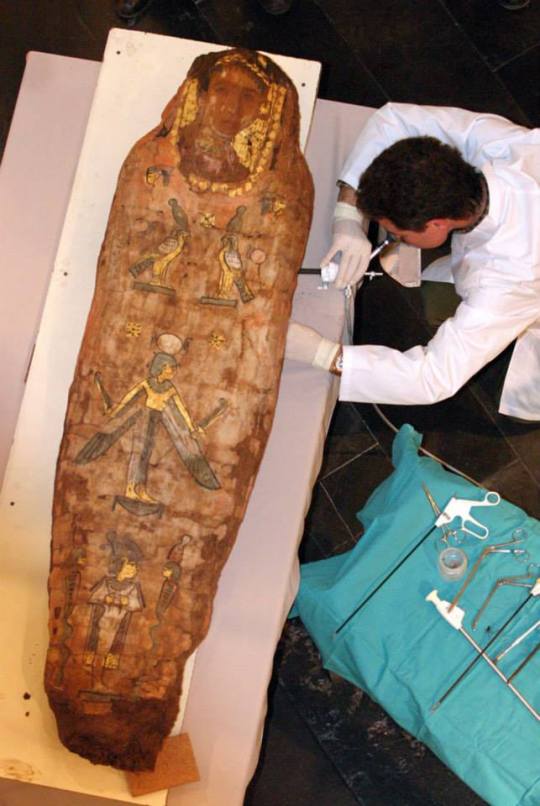
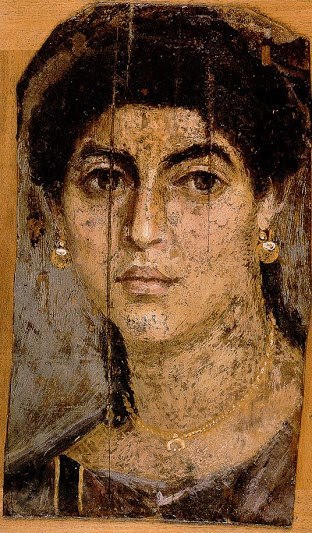


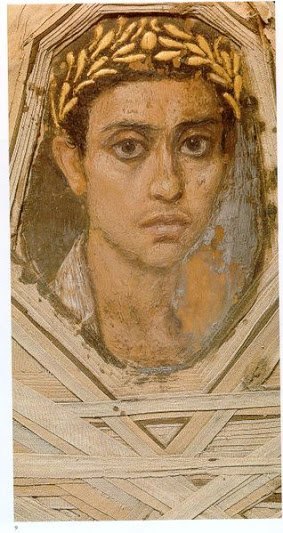
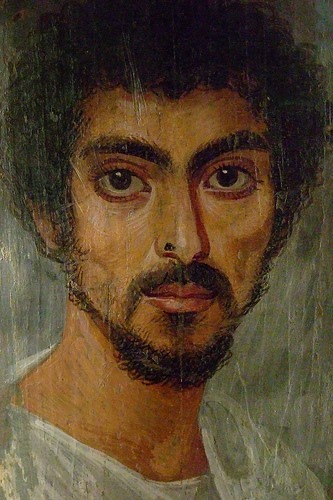
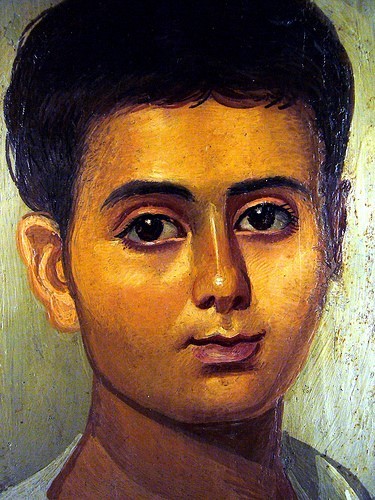
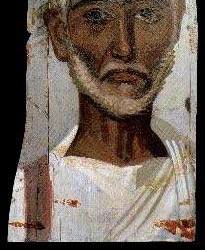
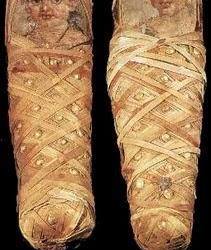
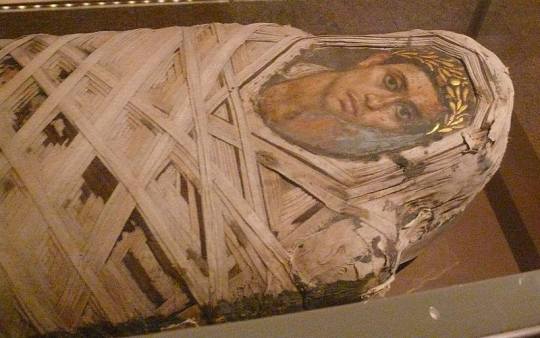
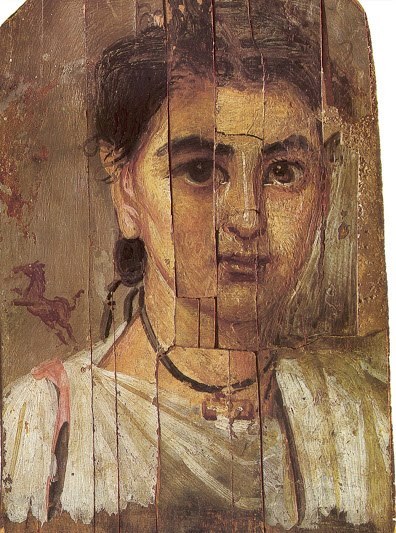
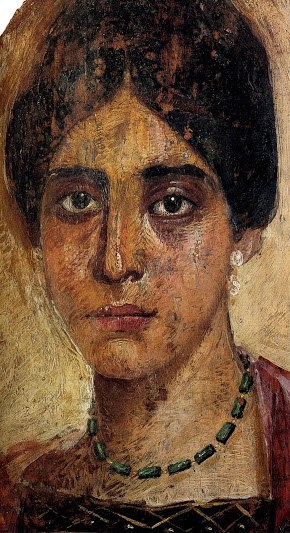

LOS RETRATOS DEL FAYUM
FAYUM MUMMY PORTRAITS
(Español / English)
Los retratos de El Fayum o retratos de momias de El Fayum (la mayoría de los retratos de esta tipología se han encontrado en esa región de Egipto) o simplemente, retratos de momias son términos modernos que se refieren a un tipo de retrato realista, pintado en tablas de madera que cubren el rostro de muchas momias de la provincia romana de Egipto. Pertenecen a la tradición de pintura en tabla, una de las formas de arte más respetadas en el mundo clásico. De hecho, los retratos de El Fayum son el único gran conjunto de arte de esa tradición que ha perdurado y que fue continuada en las tradiciones bizantina y occidental en el mundo posclásico, incluyendo la tradicional local de iconografía copta en Egipto. Los retratos de momia han sido encontrados a lo largo de todo Egipto, pero son más comunes en la región de Fayum, en particular, de Hawara a Antinoópolis, por ello el nombre; aunque, los "retratos de El Fayum" son considerados más como descripción estilística que geográfica.
------------------------------------------------------------------------------
FAYUM MUMMY PORTRAITS
Mummy portraits or Fayum mummy portraits (also Fayum mummy portraits) is the modern term given to a type of naturalistic painted portraits on wooden boards attached to mummies from the Coptic period. They belong to the tradition of panel painting, one of the most highly regarded forms of art in the Classical world. In fact, the Fayum portraits are the only large body of art from that tradition to have survived.
Mummy portraits have been found across Egypt, but are most common in the Faiyum Basin, particularly from Hawara and Antinoopolis, hence the common name. "Fayum Portraits" is generally thought of as a stylistic, rather than a geographic, description. While painted Cartonnage mummy cases date back to pharaonic times, the Faiyum mummy portraits were an innovation dating to the Coptic period on time of the Roman occupation of Egypt.[1]
They date to the Roman period, from the late 1st century BCE or the early 1st century CE onwards. It is not clear when their production ended, but recent research suggests the middle of the 3rd century. They are among the largest groups among the very few survivors of the highly prestigious panel painting tradition of the classical world, which was continued into Byzantine and Western traditions in the post-classical world, including the local tradition of Coptic iconography in Egypt.
4 notes
·
View notes
Text

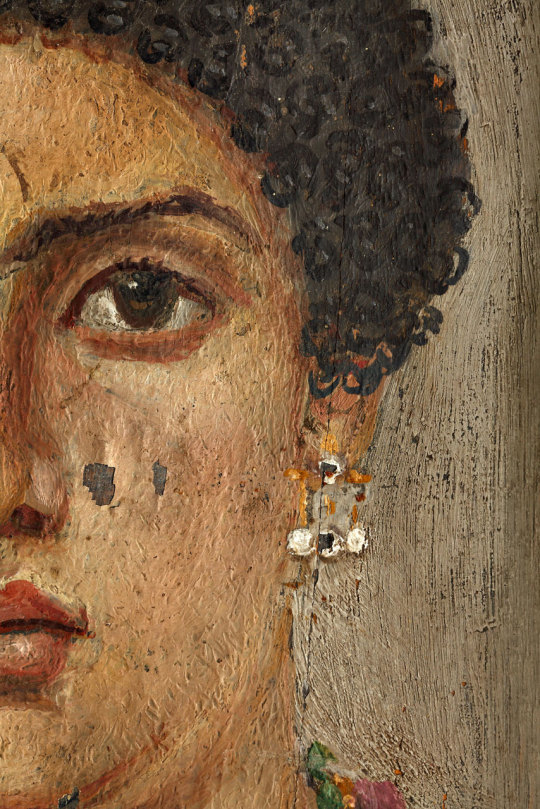
~ Portrait of a woman.
Period: Roman Period
Place of origin: Hawara, Fayum
Medium: Cedar wood with encaustic painting
#ancient#ancient art#history#museum#archeology#ancient history#roman#archaeology#portrait#ancient portrait#portrait of a woman#hawara#fayum#egyptian#egyptology#ancient egypt
708 notes
·
View notes
Text
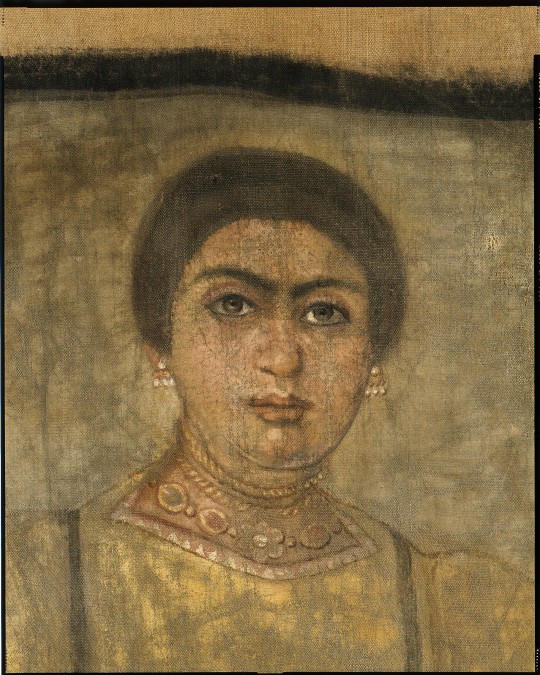
Shroud of a Woman Wearing a Fringed Tunic - Met Museum Collection
Inventory Number: 09.181.8
Roman Period, A.D. 170–200
Location Information: From Egypt; Possibly from Middle Egypt, Sheikh Abada (Antinoopolis); Said to be from Fayum
Description:
This round-faced woman wears a fine tunic with narrow clavi (stripes); a mantle is draped over her arms. The construction of her garments is not easy to understand. The very deep folds below her right arm could be part of the mantle or might constitute tunic sleeves, while a tight sleeve visible around her left wrist could belong to the tunic or an undertunic. The fine fringe around the bottom could also be part of the tunic or of the undergarment whose upper border, decorated with purple triangles, is visible at the neckline.
The woman wears a great deal of jewelry; earrings, three necklaces, six twisted gold bracelets, and three rings can be seen. On her feet are red socks and black sandals. She is flanked on either side by Egyptian deities and seems to step forward from a light gray rectangle. This form could be interpreted as a doorway, a late reminiscence of the so-called False Doors of pharaonic Egypt, elaborate niches through which the dead were believed to communicate with the living.
#Shroud of a Woman Wearing a Fringed Tunic#middle egypt#upper egypt#sheikh abada#antinoopolis#fayum#met museum#09.181.8#womens hair and wigs#roman#RPWHW
0 notes
Text

Today I was inspired by encaustic portraits :)
Encaustic or hot wax painting, is a form that involves a heated wax medium to which colored pigments are added. Some of the most famous examples are portraits from Fayum, of which more than 900 have been found. They are incredibly well preserved and still well pigmented despite being more than 1800 years old.
0 notes
Text
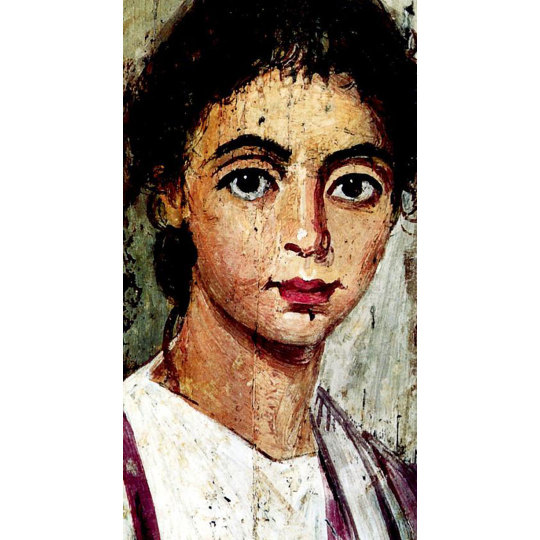

📜⠀Título: Retratos de El Fayum, panel retrato de una niña.
🌍⠀Ubicación: Altes Museum, Berlín, Alemania.
🎨⠀Estilo: Arte copto.
🔖⠀Género: retrato.
⠀⠀⠀⠀⠀⠀⠀⠀⠀⠀⠀⠀⠀⠀⠀⠀⠀⠀⠀⠀⠀⠀⠀⠀⠀
🎬⠀Aparece en: Assassin's Creed Origins (2017) ( @assassinscreed ). Desarrollado por Ubisoft Montreal ( @ubisoftmtl ). Dirigido por Ashraf Ismail.
#Foto del perfil de art_seventhart#art#arte#painting#screencaps#screenshot#fayum#portrait#retrato#ubisoft#2017#videogames#bayek#ptolomeo#cleopatra#mummy#historia del arte#art history#fayum portrait#mummy portrait#fayum mummy#ubisoft montreal#assassin's creed#assassin's creed origins#ashraf ismail#bayek of siwa#art copte#copte art
1 note
·
View note
